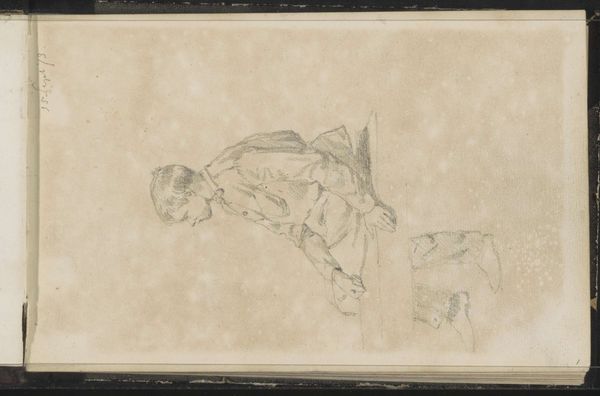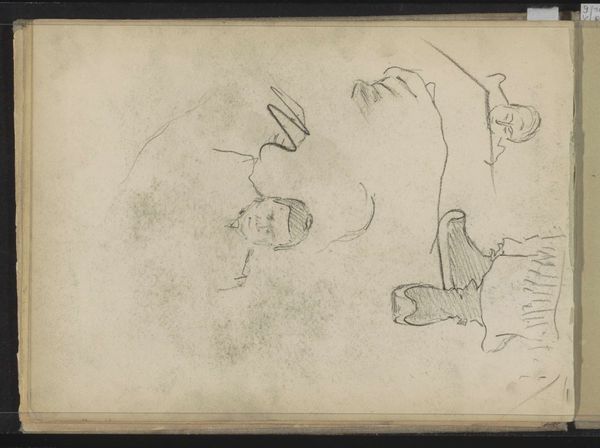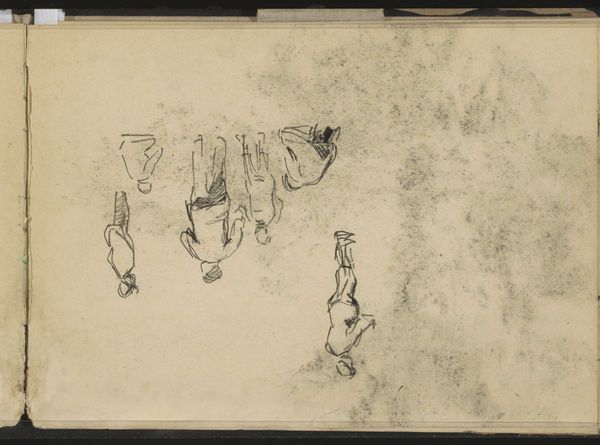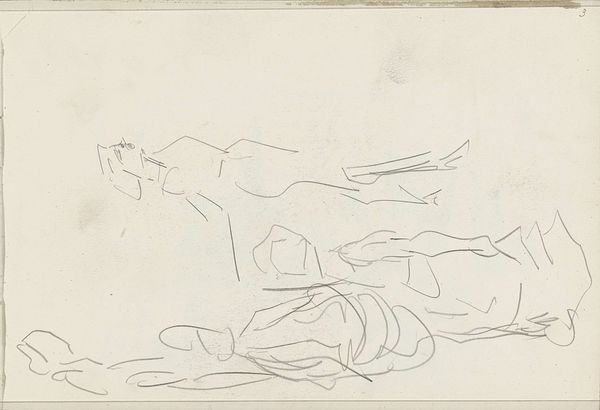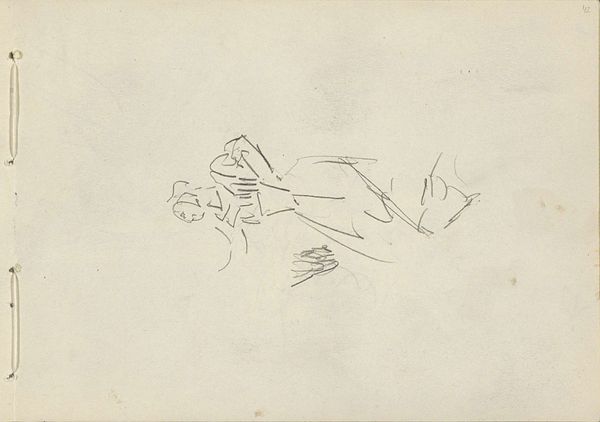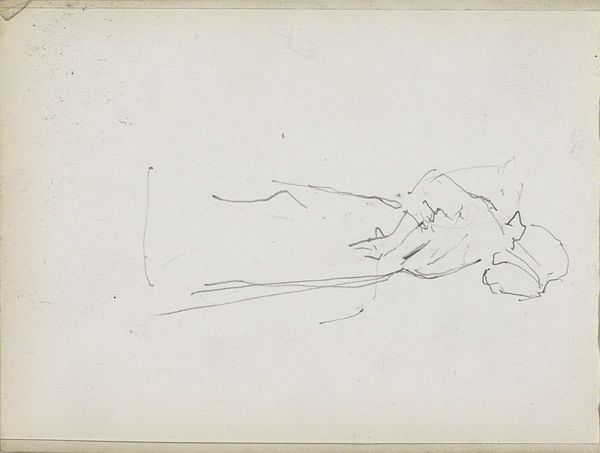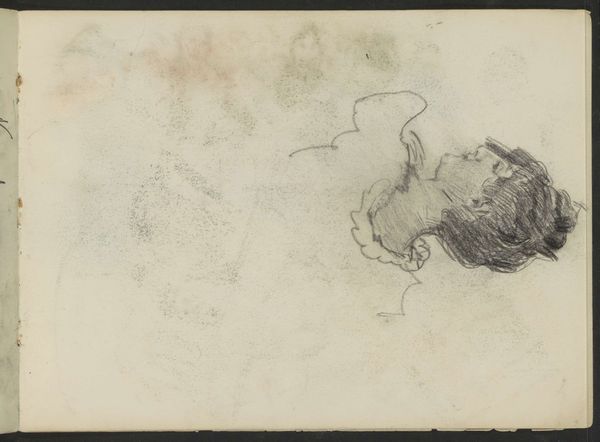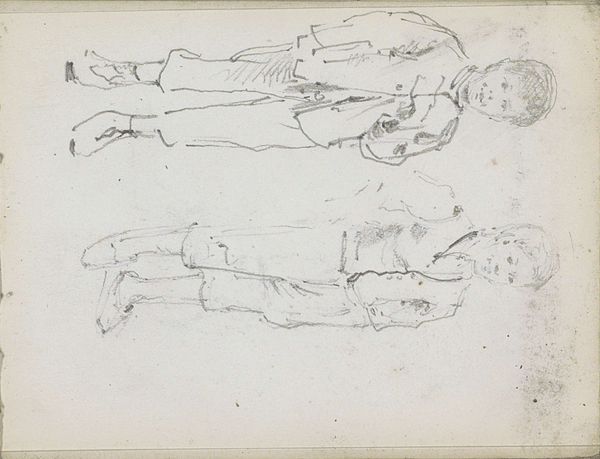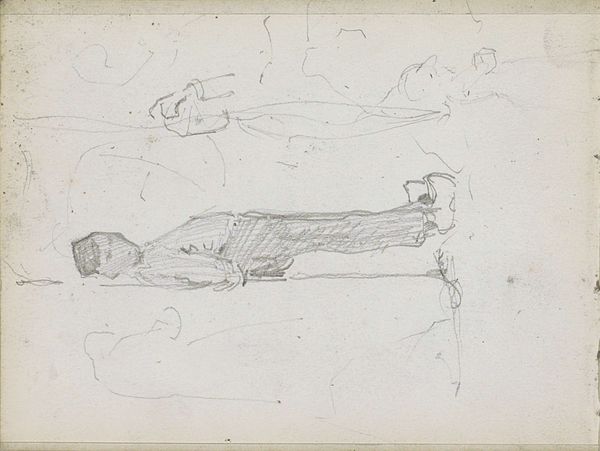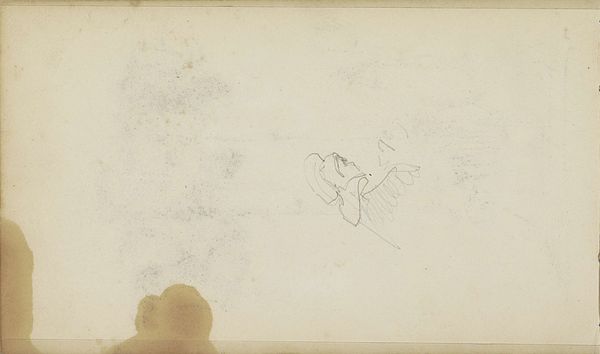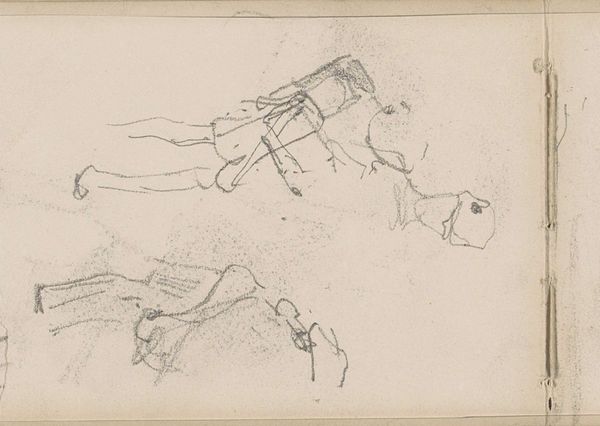
Copyright: Rijks Museum: Open Domain
Curator: I find myself drawn to the ethereal quality of this work. We're looking at "Figuurstudies", or Figure Studies, a pencil drawing on paper by Isaac Israels, dating from about 1915 to 1925, and housed here at the Rijksmuseum. It has such a sense of immediacy. Editor: It's interesting that you describe it that way, because my first impression is one of detachment. The figures feel quite isolated on the page. It’s sparse and gestural. Curator: I think that feeling of detachment stems, in part, from Israels’ impressionistic style. He’s less concerned with precise detail and more interested in capturing the fleeting essence of the figures before him. These sketches, after all, served a purpose. Israels employed a cadre of young women who populated the studio as models throughout his practice. Editor: You're right; it does evoke a specific milieu— the artist's studio, the realm of observation and creation. There's also something vulnerable about these figures, reduced to mere lines and forms. Is this typical of how women are rendered in drawing, and in Israels’ imagery overall? Curator: That is a poignant reading. The Rijksmuseum holds an immense collection of Israels’ works from this era. As Impressionism was hitting its stride, a modern culture emerged that favored portraying working-class women, particularly fashionably dressed models, actresses, and milliners, rather than rendering his bourgeois contemporaries. Israels moved in precisely these circles and took his sitters as he saw them, which some would contest has an element of detachment in its own right. Editor: The positioning on the page also affects how it's seen. The upper-most sketch of the subject’s face, for example, carries a strange emotional weight simply by being separate from the other figures, like an echo or a memory. Curator: An intriguing point. What appears spontaneous can, in fact, be quite deliberately constructed to convey specific cultural ideals, whether consciously or unconsciously on the part of the artist. But Israels manages to capture an authenticity. Editor: Well, the history embedded within it adds to the sketch’s resonance for me. A simple drawing opens up to these bigger historical themes about perception and the artistic world itself. Curator: Indeed, its apparent simplicity belies the complex narratives it hints at, from studio culture to the social landscape of the time.
Comments
No comments
Be the first to comment and join the conversation on the ultimate creative platform.

